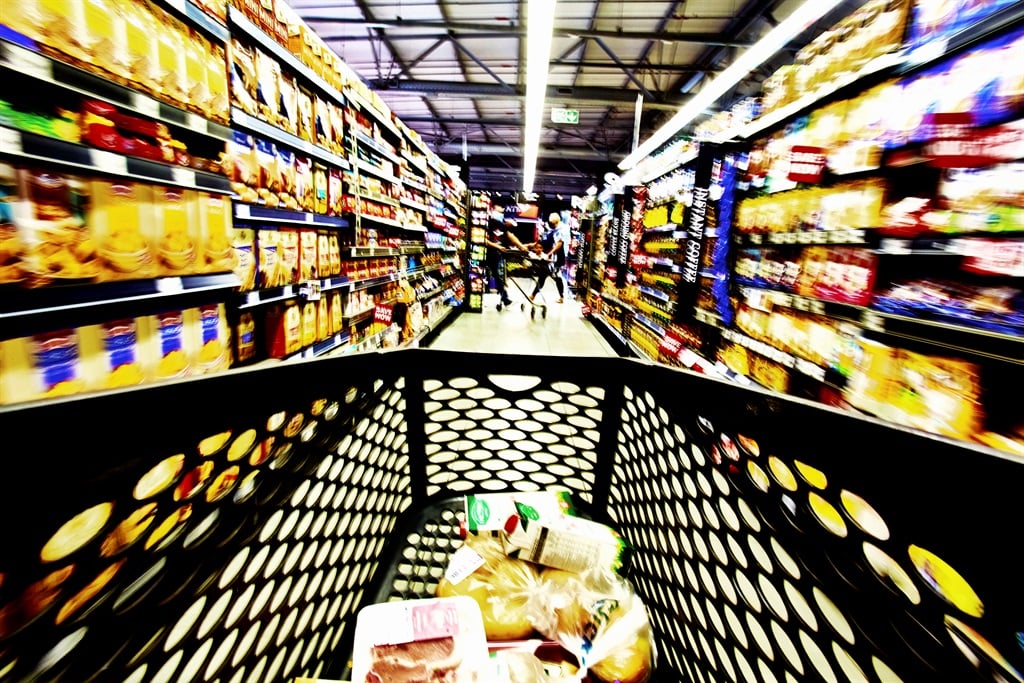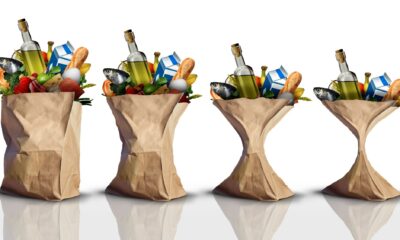News
Shrinkflation in South Africa: Why Your Groceries Are Quietly Getting Smaller

Shrinkflation in South Africa: Why Your Groceries Are Quietly Getting Smaller
If you’ve ever opened a familiar snack and thought, “Wait, wasn’t this bigger before?”, you’re not imagining things. South Africans are increasingly discovering that many of their go-to groceries are shrinking right before their eyes, even as prices continue to climb.
This quiet price hike has a name: shrinkflation.
The TikTok That Sparked the Conversation
A recent TikTok by user @nomcebo_h has reignited public frustration about the phenomenon. In the video, she walks through a local supermarket, pointing out subtle, but shocking examples of how everyday products have quietly lost volume over the years.
Among her discoveries:
-
Coca-Cola’s “buddy” bottle dropped from 500ml to 440ml, while the classic can shrank from 330ml to 300ml.
-
Country Fresh ice cream tubs, once proudly 2 litres, now come in at 1.8 litres.
-
All Gold Tomato Sauce bottles went from 750ml to 700ml, and the famous “36 tomatoes per bottle” tagline has mysteriously disappeared.
-
Cadbury chocolate slabs, a South African staple, are now 80 grams instead of 100.
“Companies keep reducing the size and quantity of products, yet keep increasing prices,” the TikToker lamented, echoing the sentiment of many shoppers feeling squeezed at the tills.
this is so interesting, i never even noticed pic.twitter.com/8m3RGMDfgz
⭐️ (@BALUCIAGA) October 7, 2025
What Exactly Is Shrinkflation?
Shrinkflation is when companies reduce the size or quantity of a product without reducing the price or worse, while increasing it.
It’s a clever accounting trick to maintain profit margins as production costs soar due to inflation, energy prices, and global supply chain disruptions. For consumers, though, it means you’re paying more for less.
There’s also a cousin to this trend called skimpflation, when manufacturers use cheaper ingredients or cut corners on quality to save costs. Either way, consumers lose value while the packaging often looks deceptively familiar.
A Global Trend, Felt Deeply at Home
Shrinkflation isn’t unique to South Africa, it’s a worldwide tactic. From American snack brands to UK tea bags, products everywhere are shrinking in silence. But in South Africa, where food inflation continues to bite, the effects are especially harsh.
According to Stats SA, food prices have increased by over 8% year-on-year, with staples like cooking oil, bread, and dairy taking the biggest hits. For working-class families, every gram counts.
Brands Respond: “We’re Keeping Things Affordable”
Major food producers like Tiger Brands, Nestlé, and Dairymaid have all confirmed they’ve adjusted packaging sizes. But they insist it’s not deception, it’s survival.
Tiger Brands, for instance, said it introduced smaller packs “to keep products affordable and give consumers options.” The company also noted that recipes and packaging are constantly reviewed in response to economic conditions.
According to consumer journalist Wendy Knowler, South Africa’s National Regulator for Compulsory Specifications (NRCS) allows size reductions, as long as the change is clearly reflected on the label. The problem, however, is that most consumers don’t notice the small print until it’s too late.
Shoppers Are Fighting Back
Online, South Africans are venting their frustrations and getting creative. On X (formerly Twitter), users have been posting side-by-side photos of old and new packaging, with captions like “The Great Disappearing Act of 2025.”
Others say they’ve switched to buying in bulk, sharing family-sized deals with neighbours, or shopping directly from wholesalers to stretch their rands.
Still, many feel brands should be more transparent. As one comment read, “If you’re going to give me less, just say it. Don’t pretend you’re doing me a favour.”
A Sign of the Times
Shrinkflation may seem small, a few millilitres here, a few grams there, but its impact adds up over time, especially in a country battling rising living costs.
While some see it as a smart business strategy, others view it as a quiet betrayal of consumer trust. Either way, it’s a reminder to pay attention not just to the price tag, but to the fine print.
Because in today’s South Africa, the cost of living isn’t just going up, it’s also getting smaller.
{Source: The South African}
Follow Joburg ETC on Facebook, Twitter , TikTok and Instagram
For more News in Johannesburg, visit joburgetc.com



























